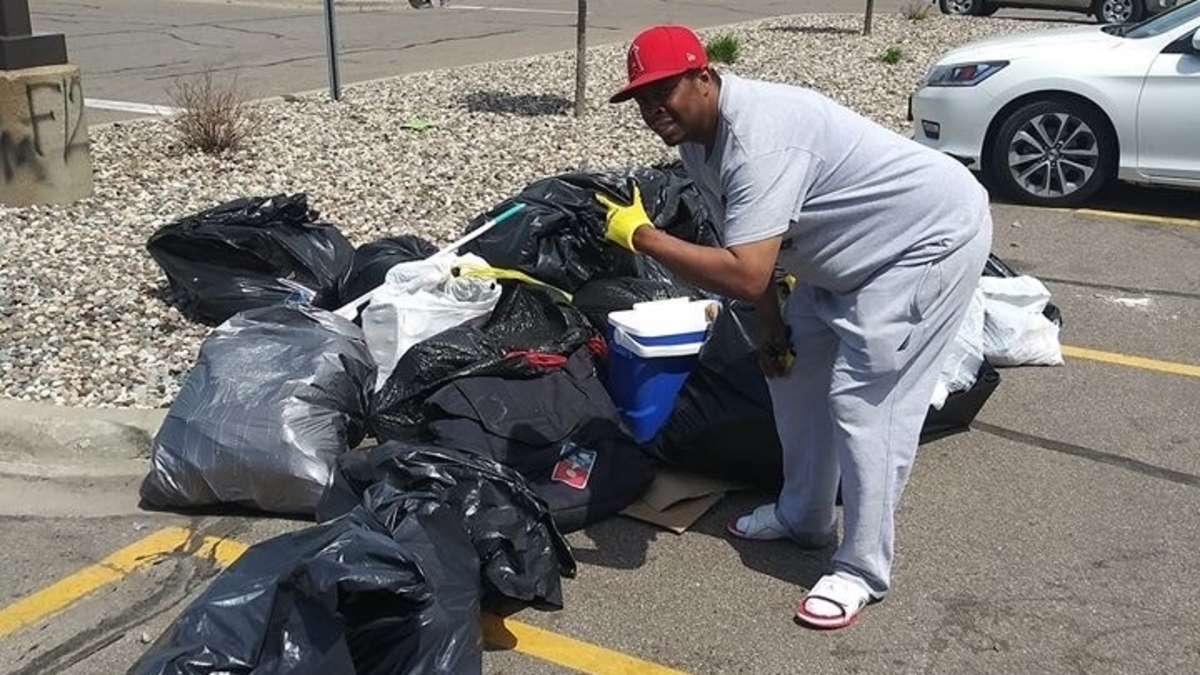At the first protest held for George Floyd, a 46-year-old man murdered by Minneapolis police officers on 38th and Chicago Avenue, the crowd grieved and mourned. The group gathered on a sorrowful Tuesday afternoon, following his Memorial Day death, because yet another Black man had succumbed to police brutality. Since then, worldwide protests have sparked a demand for justice and accountability. However, peaceful protests have been met with violence from the authorities time and time again.
In light of recent events, many media sources have decided to cast a negative light over all Black protesters, mislabeling the crowds as rioters and looters. But those who have taken part in peaceful demonstrations have different truths to share. Their realities highlight the Black community doing its best to uplift and restore Minneapolis.
In South Minneapolis, where the first U.S. urban safe-haven for Native Americans is located, buildings have been transformed into distribution centers. The small neighborhood, known as Little Earth Community has provided affordable housing and a community space to 39 different Native American tribes for over 40 years. Now, it is collecting donations to meet the basic needs of its neighbors, with many Black residents and protesters contributing to the cause.
Photo credit: Catera Keeler (Little Earth Community building filled with donations).
“Donating food to the Little Earth Community was important to me because, during times like these, it is important to make sure that all people of color have what they need,” Twin Cities resident Ariana Jackson (20) told Blavity.
Furthermore, a peaceful protest beginning at U.S. Bank Stadium in downtown Minneapolis was scheduled for Sun. May 31 and word quickly spread instructing participants to wear all black attire. Many Little Earth donors could be identified as protesters as they donned black outfits in support and solidarity. One uniformed young Black couple, who wished to remain anonymous, shared their thoughts about the George Floyd protests.
“We have been protesting for three days now, while also finding ways to volunteer our time and resources to rebuild the community,” the couple said.
Photo credit: Catera Keeler (Cars filled with donations pool into Little Earth Community).
The overwhelming majority of protesters, who are responding to their neighbors’ needs, share the same sentiments. On ground, these activists appear to be countering the negative and racist stereotypes that claim Black protesters are violent by nature and largely engaging in destructive behavior. Organizations like A Mother’s Love and Luther’s Gethsemane Lutheran Church are completely shattering this negative depiction as well. On Monday, 76 volunteers collaborated to give away fresh BBQ grilled meat and side dishes to anyone in need. The two organizations also handed out boxed lunches, diapers, non-perishable food and paper towels. It’s important to note that this good deed has been happening since COVID-19 concerns started. In response to recent events, the charitable partners have revved up their distributions to six days a week. Similarly to those donating at the Little Earth Community distribution center, Black protesters heavily supported the A Mother’s Love and Lutheran church site.
Photo credit: Catera Keeler (A Mother's Love and Luther’s Gethsemane Lutheran Church distribute essentials).
Black involvement has not begun and ended with donating to distribution centers. In addition to donating, many Black protesters are participating in street clean-ups around the city. On Lake Street, which was the site of numerous fires and damaged buildings, Black demonstrators are mobilizing and starting to tidy the area. Peaceful protests have been a way to relieve the bottled-up tension, frustration and hurt caused by the inhumanity that the Black community faces on a daily basis. Cleaning back up the city has been another form of peaceful protest challenging the narrative that “Blacks destroy and whites rebuild.”
“The media is only showing minorities doing the looting and white people doing the cleaning. They are actually side-by-side on both,” Twin Cities resident Nicole L. (43) said.
Photo credit: Catera Keeler (Diverse community members assemble to clean the community).
To say that it has been a rough week for Minneapolis, Minnesota would be a major understatement. Many non-black Minnesotans are just now starting to understand the reality and world in which Black people live. However, this has been an ongoing battle that extends beyond George Floyd’s murder on Mon. May 25. Still, even in our deepest sorrow, Black people have continuously shown generosity and resilience.
“I got to go clean up the streets to change the narrative and shine a light on the African American community that shows our culture, hearts and spirit,” Don Eebs (22) said.




